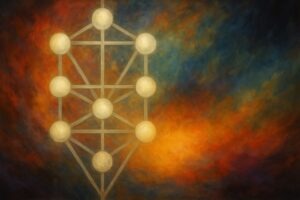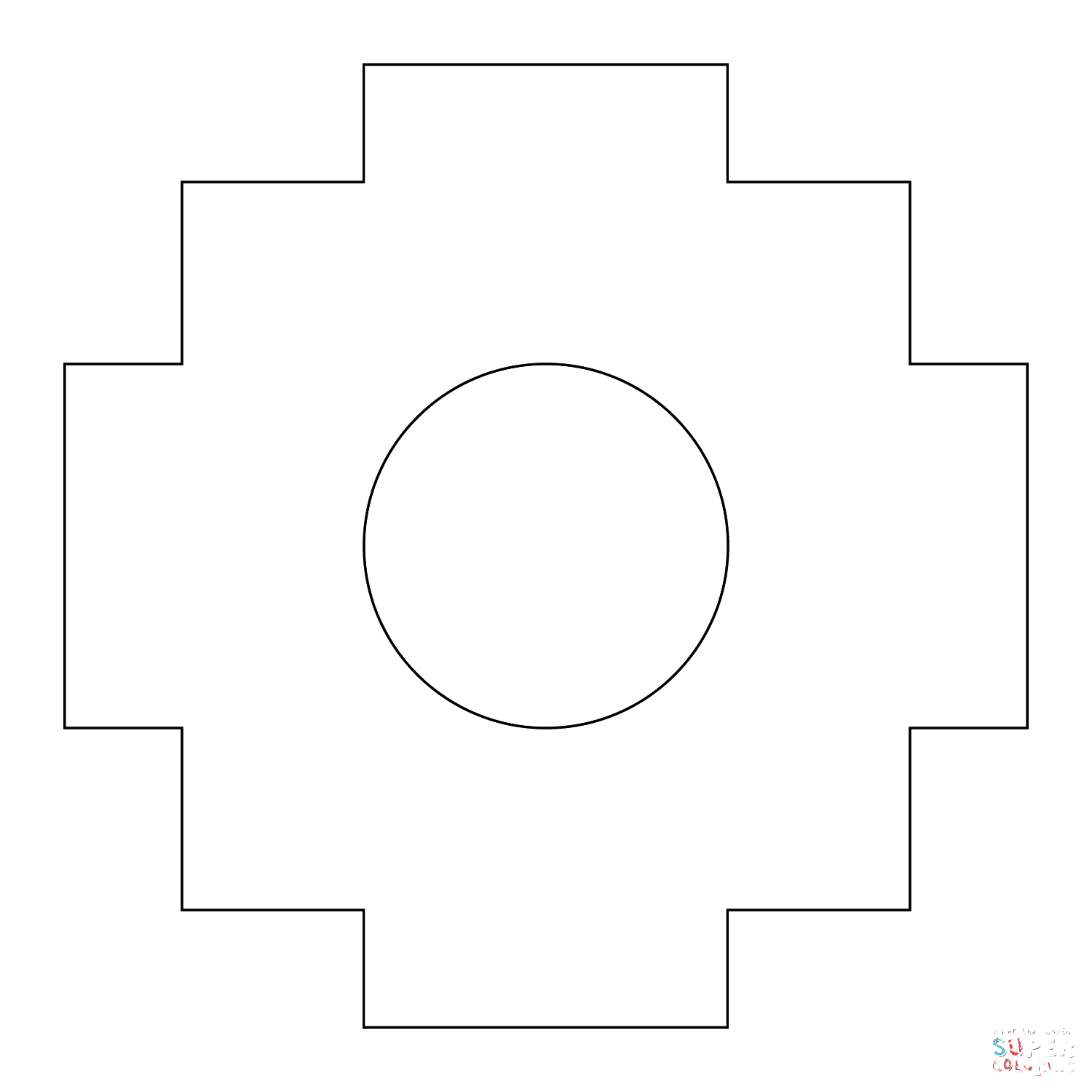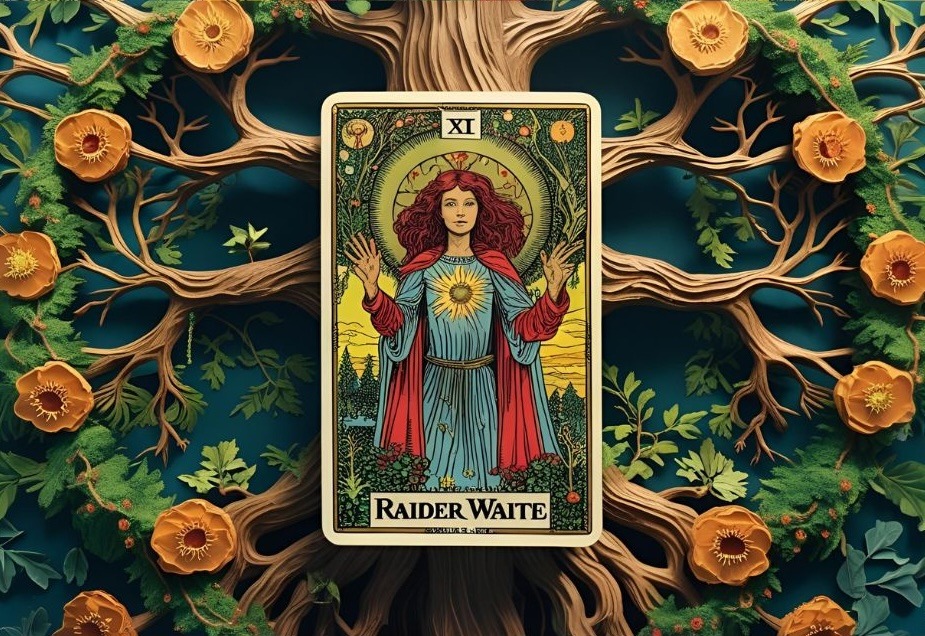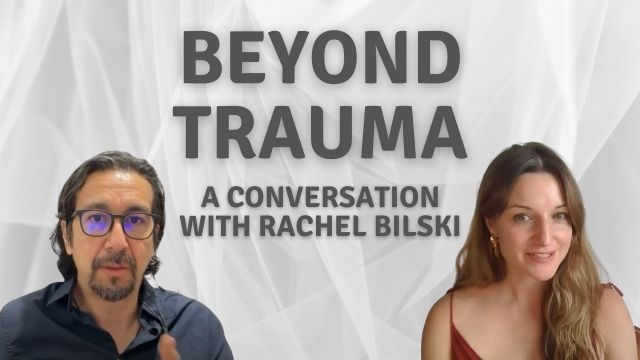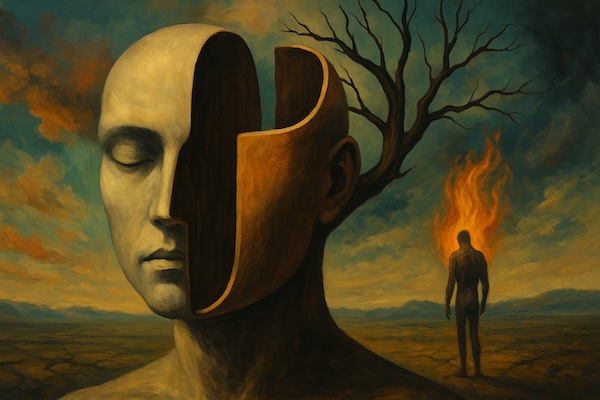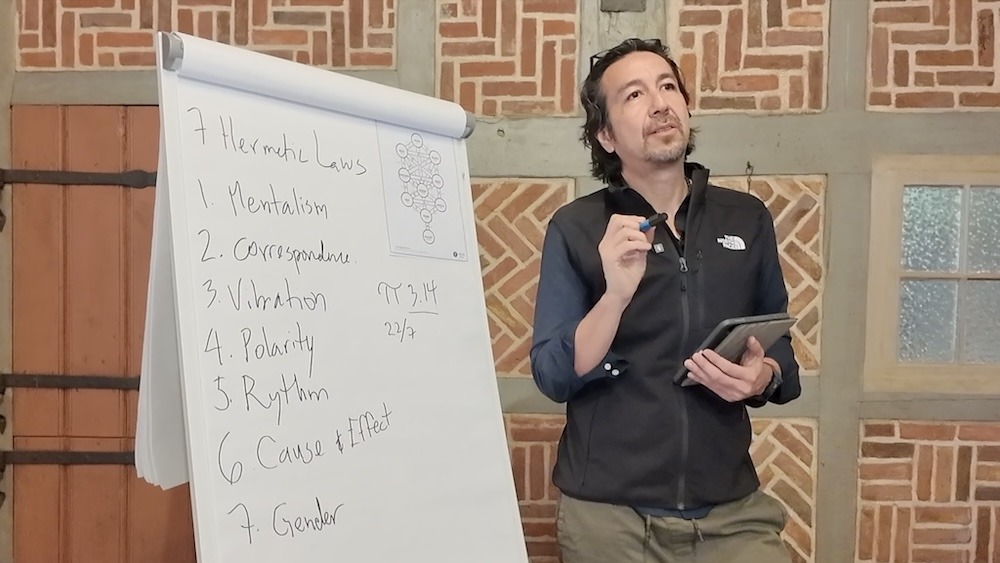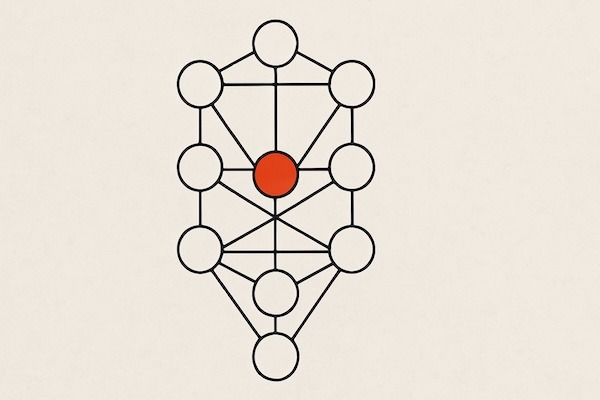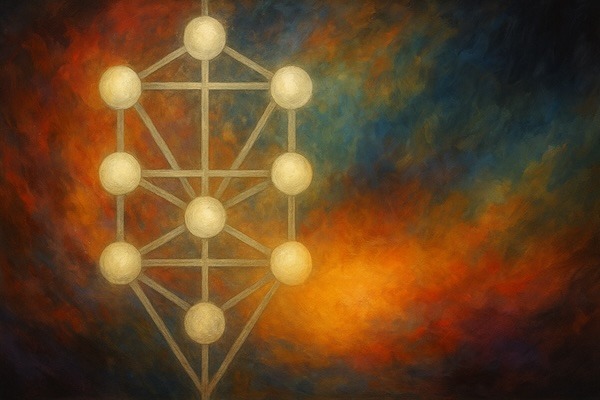The tarot’s origins are complex and somewhat contested, but most historians trace its earliest forms to 15th-century Italy, where it emerged as a card game called “tarocchi” among the nobility. The earliest surviving decks, like the Visconti-Sforza tarot from around 1440, were primarily used for gaming rather than divination.
The connection between tarot and Kabbalah is largely a later development, primarily emerging during the 18th and 19th centuries through the work of occultists and esotericists. This connection wasn’t inherent to the original tarot but was deliberately constructed by scholars seeking to create a more sophisticated symbolic framework.
The key figures in establishing this relationship include:
Antoine Court de Gébelin (18th century) was among the first to propose that tarot cards contained ancient Egyptian wisdom and had connections to mystical traditions, though his theories lacked historical evidence.
Éliphas Lévi (Alphonse Louis Constant) in the mid-19th century made more explicit connections between the 22 Major Arcana cards and the 22 letters of the Hebrew alphabet, suggesting each card corresponded to a path on the Kabbalistic Tree of Life. This was largely his own synthetic creation rather than an authentic tradition.
The Hermetic Order of the Golden Dawn in the late 19th century further systematized these connections, creating elaborate correspondences between tarot cards, Hebrew letters, astrological signs, and the ten sefirot of the Kabbalistic tree. Members like A.E. Waite and Aleister Crowley developed influential tarot decks based on these principles.
From a psychological perspective, Carl Jung later found value in tarot imagery as representations of archetypal patterns, viewing the cards as useful tools for exploring the unconscious mind, regardless of their historical origins or mystical claims.
The Kabbalistic-tarot synthesis represents a fascinating example of how spiritual and philosophical systems can be creatively combined to create new meaning structures, even when the historical connection is tenuous. This synthetic tradition has become so influential that many people now assume the connection is ancient and authentic, when it’s actually a relatively modern interpretive framework.
Authors such as Eliphas Levi and Aleister Crowley consider the Tarot to be a symbolic representation of the universe, closely linked to the Tree of Life in Kabbalah. This relationship is clearly manifested in the correspondences between the 22 Major Arcana of the Tarot, the 22 paths of the Sefirotic Tree, and the 22 letters of the Hebrew alphabet.
In this article we will focus on the Ride Waite version of the early 1900’s which is the most popular and closely designed after the Tree of Life kabbalistic sephirot and symbols. On this article we will explore the relationship of the tarot and the tree of life and how to interpret its cards from the Tree of Life.
The Tarot as a Symbolic Language
Although the Marseille Tarot emerged in the Middle Ages, its structure seems to reflect an ancestral wisdom linked to the Torah (תורה). The word “Tarot” can be interpreted as a mirror transposition of “Torah”, where:
- Tau (ת) represents matter and the world (cross, end)
- Hei (ה) symbolizes breath or spirit
Thus, the Tarot can be seen as a bridge between spirit and matter, and its images allow the processes of the soul in its journey through the Tree of Life to be understood.
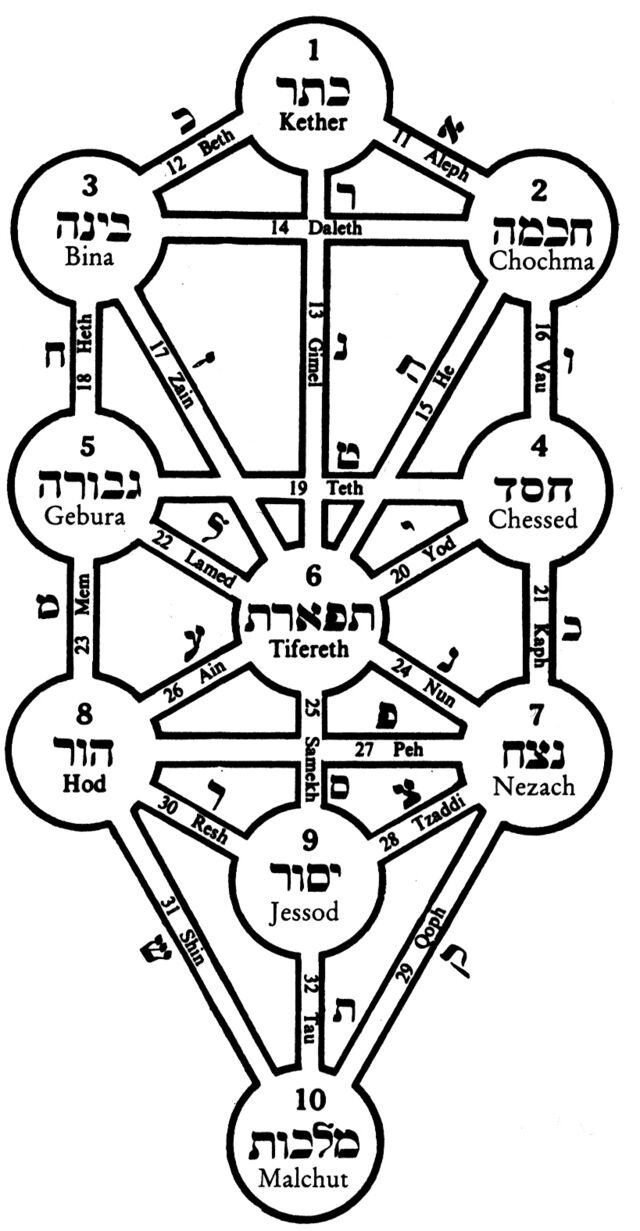
Structure of the Tarot and the Tree of Life
The complete Tarot contains 78 cards, which symbolically integrate with the Tree of Life in the following way:
1. Major Arcana (22 cards)
Each of the 22 Major Arcana corresponds to one of the 22 paths of the Tree of Life, which connect the sefirot (spheres). Each path is also linked to a Hebrew letter.
2. Numbered Cards (40 cards)
They represent the 10 sefirot multiplied by the 4 suits (wands, cups, swords, coins). Each suit represents a Level of Manifestation:
Wands: Atziluth (Fire – Emanation)
Cups: Bri’ah (Water – Creation)
Swords: Yetzirah (Air – Formation)
Coins: Assiyah (Earth – Action)
3. Court Cards (16 cards)
4 figures (King, Queen, Knight, Page) per suit. These are associated with the 16 triads of the Tree:
6 structural triads
5 active triads
5 passive triads
Correspondences: Paths, Hebrew Letters and Major Arcana
| Path No. | Hebrew Letter | Major Arcana | Initiatory Meaning |
|---|---|---|---|
| 0 | Shin ש | The Fool | Spiritual freedom, pure potential |
| 1 | Alef א | The Magician | Will, creative action |
| 2 | Bet ב | The High Priestess | Inner wisdom, receptivity |
| 3 | Gimel ג | The Empress | Fertility, creativity, nature |
| 4 | Dalet ד | The Emperor | Structure, order, concrete action |
| 5 | Hei ה | The Hierophant | Tradition, spiritual guidance |
| 6 | Vav ו | The Lovers | Duality, choice, integration of opposites |
| 7 | Zayin ז | The Chariot | Directed will, progress, victory |
| 8 | Chet ח | Justice | Cosmic law, balance, karma |
| 9 | Tet ט | The Hermit | Inner search, hidden wisdom |
| 10 | Yod י | Wheel of Fortune | Change, cycles, destiny |
| 11 | Kaf כ | Strength | Courage, instinct control |
| 12 | Lamed ל | The Hanged Man | Sacrifice, pause, inverted view |
| 13 | Mem מ | Death | Transformation, end of cycle |
| 14 | Nun נ | Temperance | Alchemy, integration, inner harmony |
| 15 | Samekh ס | The Devil | Shadow, desire, attachments |
| 16 | Ayin ע | The Tower | Disruption, liberating truth |
| 17 | Pe פ | The Star | Hope, vision, clarity |
| 18 | Tsade צ | The Moon | Unconscious, illusions, intuition |
| 19 | Qof ק | The Sun | Revelation, joy, enlightenment |
| 20 | Resh ר | Judgment | Awakening, evaluation, redemption |
| 21 | Tav ת | The World | Fulfillment, unity, wholeness |
Note: This revised numbering begins with The Fool as path 0 and ends with The World as path 21, aligning with many modern Tarot traditions.
Triads and Court Cards
Structural Triads
Roots (Kether, Chokmah, Binah) → King of Wands
Faith (Chokmah, Binah, Tiferet) → King of Cups
Ethics (Chesed, Gevurah, Tiferet) → Queen of Cups
Awakening (Tiferet, Hod, Netzach) → Queen of Wands
Mood Balance (Hod, Netzach, Yesod) → Page of Swords
Insertion into the World (Hod, Netzach, Malkuth) → Page of Coins
Active Triads
Mysticism (Kether, Chokmah, Tiferet) → King of Coins
Innovation (Chokmah, Chesed, Tiferet) → Queen of Swords
Desires (Chesed, Tiferet, Netzach) → Knight of Coins
Impulse (Tiferet, Netzach, Yesod) → Knight of Cups
Initiative (Netzach, Yesod, Malkuth) → Page of Wands
Passive Triads
Asceticism (Kether, Binah, Tiferet) → King of Swords
Conservation (Binah, Gevurah, Tiferet) → Queen of Coins
Fears (Gevurah, Tiferet, Hod) → Knight of Swords
Intuition (Tiferet, Hod, Yesod) → Knight of Wands
Logic (Hod, Yesod, Malkuth) → Page of Cups
Practical Application: Kabbalistic Spreads
1. Triad Spread
Draw 3 cards. If they form a closed triad: indicates deep blockage.
If it is an open triad (two contiguous cards): the missing card reveals the unintegrated aspect.
The card outside the triad suggests the necessary action.
Example: The Fool (0), The Magician (1), The Devil (15)
Fool + Magician form Roots Triad.
The Empress (3) is missing → Family-related conflict.
The Devil → Access the unconscious, work on the shadow.
2. Linear Spread
Card 1: Obstacle
Card 2: What must be done
Card 3: Result if the advice is followed
Each card is interpreted according to its path and symbolic energy. The goal is not to predict the future, but to show the present state of the soul and its potential transformation.
Conclusion
The Tarot and the Tree of Life form a coherent esoteric language rich in symbolism. Using the Tarot as a kabbalistic introspective tool allows access to deep levels of the psyche, revealing the stages of the soul’s journey toward integration, balance, and wisdom. This vision can be used both in therapeutic practice and on the personal initiatory path.
Either used for divination or self-knowledge the Tarot is a great tool to learn about the Tree of Life, its sephirot qualities, the paths, numerology and hebrew letters. It is an instrument that can take the Tree of Life into a realm of the mystery of synchronicity, energy channeling and exploration of the unconscious mind.
Recent Articles

Beyond Trauma: Self, Parts & Healing Complex PTSD – A Conversation with Rachel Bilski

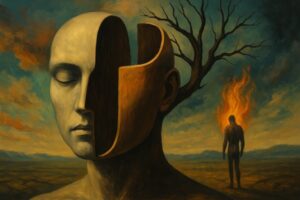
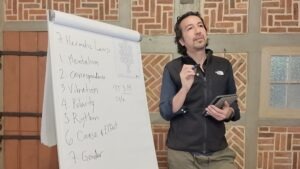
Understanding the Mind of God: The Seven Hermetic Laws Explained
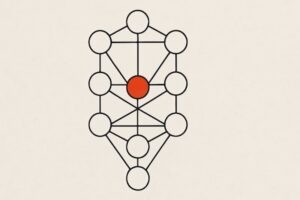
The Klipot of the Tree of Life: Understanding Psychological Imbalances through Kabbalistic Symbolism
